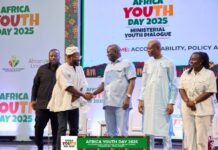More bumblebees were found in bean fields in landscapes with a high proportion of semi-natural habitats and landscapes with a high proportion of faba beans, according to the researchers. Furthermore, bean yields were higher here.
Insect pollination is critical for the production of many food crops. Pollinators, such as bees, rely on the availability of nesting sites and adequate food. When these conditions are not met, pollinators do not appear, and the yield of flowering arable crops such as broad beans or oilseed rape suffers.
A team from the University of Gottingen and the Julius Kuhn Institute (JKI) in Braunschweig studied how the composition of flowering crops and semi-natural habitats in the landscape affects bee density, and nectar collection behaviour, and faba bean (Vicia faba) yields. The study’s findings were published in the journal Basic and Applied Ecology.
Findings of Study:
More bumblebees were found in bean fields in landscapes with a high proportion of semi-natural habitats and landscapes with a high proportion of faba beans, according to the researchers. Furthermore, bean yields were higher here.
The researchers observed and recorded the foraging behaviour of honeybees and wild bees in bean fields across agricultural landscapes with varying landscape compositions. They also calculated the yield parameters for each individual plant.
“Pollination by insects increases faba bean yields. Our research found that insect-pollinated plants produced approximately 34% more beans per pod than non-insect-pollinated plants” Dr. Doreen Gabriel of the JKI explains.
“Pollination success in faba beans is determined not only by the density of bees in the fields but also by the specific bee species collecting nectar. Bumblebees with short proboscis frequently steal nectar from faba beans by biting holes in the calyxes (the outer sepals that protect the flower bud). In contrast, bumblebees with longer proboscis collect nectar from the front of the flower on a regular basis, resulting in increased rates of cross-pollination. However, few studies have been conducted to determine whether the behaviour of bees collecting nectar is also influenced by the availability and distribution of other resources in the landscape, i.e. the composition of the landscape,” says Dr. Nicole Beyer, the first author, who did her Ph.D. at the University of Gottingen and now works at the Thünen Institute in Braunschweig.
The study found that when there was a high proportion of faba beans in the landscape, short-tongued bumblebees stole nectar more frequently from them.
“Our research shows how important the composition of the landscape is for crop yield, using the faba bean as an example. The availability of flower-rich habitats can boost bee density in fields, as well as their foraging behaviour and pollination services,” said Professor Catrin Westphal, Head of Functional Agrobiodiversity at Gottingen University.








